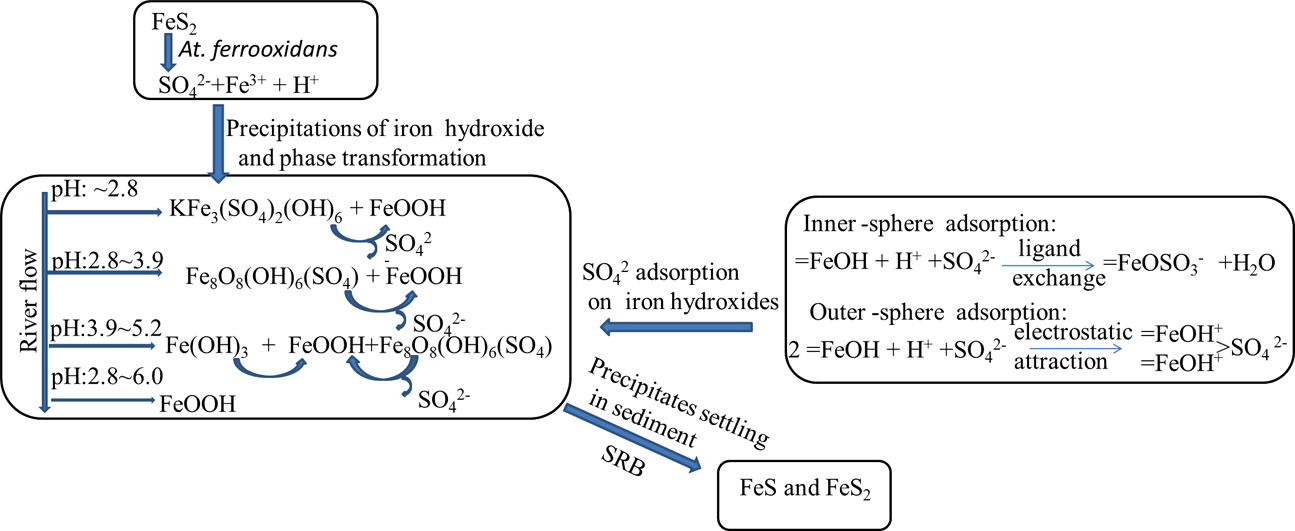【标题】Sulfatemigration in a river affected by acid mine drainage from theDabaoshan mining area, South China
【期刊】Chemosphere

【第一作者】陈梅芹
【摘要】Sulfate,a major component of acid mine drainage (AMD), its migration in anAMD-affected river which located at the Dabaoshan mine area of SouthChina was investigated to pursue the remediation strategy. Theexisting factors of relatively low pH values of 2.8–3.9, highconcentrations of SO42-(∼1940mg L−1)and Fe3+ (∼112mg L−1)facilitated the precipitation of schwertmannite (Fe8O8(OH)6SO4·nH2O)in the upstream river. Geochemical model calculations implied theriver waters were supersaturated, creating the potential forprecipitation of iron oxyhydroxides. These minerals evolved fromschwertmannite to goethite with the increasing pH from 2.8 to 5.8along the river. The concentration of heavy metals in river waterswas great reduced as a result of precipitation effects. The largesize of the exchangeable sulfate pool suggested that the sedimentshad a strong capacity to bind SO42-.The XRD results indicated that schwertmannite was the predominantform of sulfate-bearing mineral phases, which was likely to act as amajor sulfate sink by incorporating water-borne sulfate into itsinternal structure and adsorbing it onto its surface. The small sizeof reduced sulfur pools and strong oxidative status in the surfacesediments further showed that SO42-shifting from water to sediment in form of sulfate reduction was notactivated. In short, precipitation of sulfate-rich iron oxyhydroxidesand subsequent SO42-adsorption on these minerals as well as water dilution contributed tothe attenuation of SO42-along the river waters.
【文章链接】https://doi.org/10.1016/j.chemosphere.2014.07.094
